| Examples of plates made with Scotchlite™ giving them a yellowish hue: | Examples of plates made with Reflectolite™ giving them a more white color: |
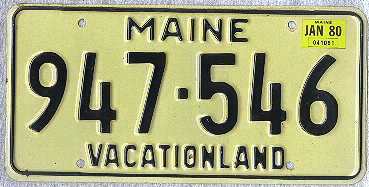 |
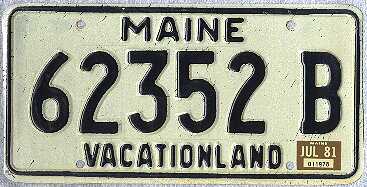 |
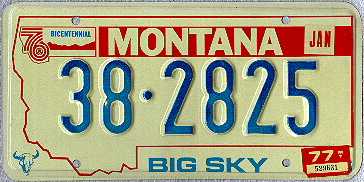 |
 |
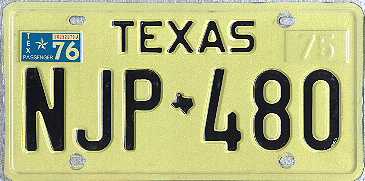 |
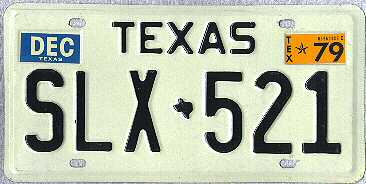 |
| License Plate Info .com homepage | * * * |
guide to license plate grading | * * * |
INDEX OF PLATES FOR SALE |
What is scotchlite?
In the 1950s some states began to make the background of their license plates reflectorized using a product marketed by the Minnesota Mining and Manufacturing Company (3M). The product was a tape-like adhesive called Scotchlite™. It was applied to the bare metal that the plate was to be made of before anything was stamped onto the plate. This was the same adhesive used to make highway signs reflectorized. Scotchlite™ came in various colors. The product that was marketed as white was not really a true white color, but had a yellowish hue to it. This hue usually faded a bit after a few weeks exposure to the weather. Unissued plates show this yellow hue the most. This can be seen by the 1972 Minnesota plate on the page showing examples of mint condition plates.
In the mid-1970s 3M changed Scotchlite™ a bit and made it a more true white or grey-white color. The improved product was marketed under the brand name of Reflectolite™. By the end of the 1970s Reflectolite™ was appearing on many state's plates as their supplies of Scotchlite™-made plates were issued and new plates were made with Reflectolite™.
The difference between a plate made with Scotchlite™ and a plate made with Reflectolite™ is sometimes difficult to see. If a plate of either material was used for a long period of time the sun causes the color of the material to change. The difference is best seen on plates used for a short period of time.
Below are three examples of plates from the same state showing the difference between Scotchlite™ and Reflectolite™. The two plates from each state were scanned with the exact same light settings to give a true comparison. Even though the plates with Scotchlite™ have a yellowish hue to them, they are still considered to have a white background.
In the 1990s the Avery-Dennison Company began to market a similar product and it has begun to show up on some license plates. North Carolina and the Canadian province of Ontario currently use the Avery-Dennison material.
License plate collectors use the generic term scotchlite to refer to any plate made with a background which is made reflectorized by the application of a reflective tape-like adhesive to the bare metal in the manufacturing process. The product may or may not be the true 3M product Scotchlite™.
Not all plates with a reflectorized background are scotchlite. One other way to make plates reflectorized is the application of very small glass beads to the wet paint of a plate. In the 1960s many states used this process to make the numbers of a plate reflective while the background was not reflectorized. Wyoming did this from 1957 through 1971. It was also done in the 1980s and 1990s by Colorado and Connecticut. From the 1940s to 1960s a lesser number of states used this process to make the background of their plates reflectorized. Maine may have been the state which did this the most, using it on the background of their plates from 1950 through 1967 before switching to scotchlite in 1968.
| Examples of plates made with Scotchlite™ giving them a yellowish hue: | Examples of plates made with Reflectolite™ giving them a more white color: |
 |
 |
 |
 |
 |
 |
Scotchlite discoloration
The reflectorized tape-like adhesive that license plate collectors generically refer to as scotchlite is made in various grades depending on how durable it has to be. Plates that were made to be used for only one year are made with a lesser-quality scotchlite that is intended to maintain its reflective qualities for not much more than one year. After all, if a plate is meant to be used for one year, what does the state care if it falls apart after three years?
Plates that are intended to be used for longer periods of time are made using a more durable scotchlite. In the 1980s Texas did some studies and determined that the quality of scotchlite they were using began to degrade rapidly after eight years. For this reason Texas began to replace plates once they reached an age of eight years. The 1993 Texas plate on the page showing examples of fair-to-good condition plates is an example of this deterioration. This plate was issued in the early 1980s and by the time it was taken out of service in 1993 the scotchlite was beginning to streak and erode off the plate.
Scotchlite is basically a plastic tape. Constant exposure to the weather dries the tape out. Early versions of scotchlite (the 3M product Scotchlite™) degrade quickly after a few years and discolors to a grey color. Sometimes this grey color is mottled. Exposure to moisture and changes in temperature seem to accelerate this deterioration. Early 1970s plates from states such as Texas, Florida, Illinois, Indiana and others frequently show this grey discoloration. The material that the plates are made of may be a factor also, as it seems to be worse on steel plates than on aluminum plates. Scotchlite discoloration is less common on plates made with the 3M product Reflectolite™, but it does happen.
Three plates are shown below. The first Florida plate does not suffer from discoloration, at least not yet. The second Florida plate shows severe discoloration. This is what one might expect to see on a plate if it were tacked up in a garage in a humid climate for many years.
Unissued plates are not immune from discoloration. The Mississippi plate was never issued, but suffers from discoloration at the left end. It was probably stored in a box which was open at the end which allowed moisture to affect the left end of the plate more than the right end of the plate.
So let this be a warning to any plate collectors with scotchlite-reflectorized plates. Don't leave them in the garage! You may not see it but over time the changes in temperature and humidity will cause the scotchlite to deteriorate.
| Florida 1973 plate not suffering from discoloration, at least not yet |  |
| Florida 1973 plate suffering from severe discoloration | 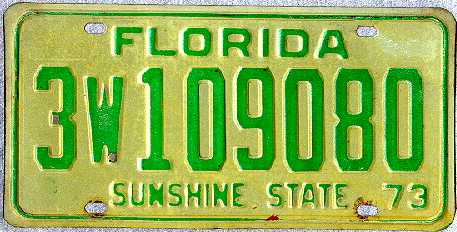 |
| Mississippi 1975 dray plate showing various degrees of discoloration | 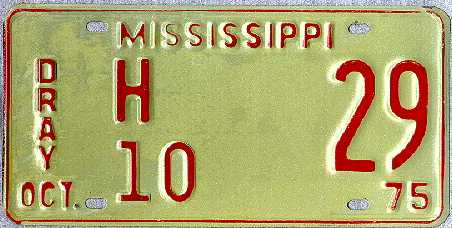 |
| Links to pages showing photographic examples of each grade: | ||||||
| mint (m) |
* * * |
excellent (exc) |
* * * |
very very good (vvg) |
* * * |
very good (vg) |
| good to very good (gvg) |
* * * |
good (g) |
* * * |
fair to good (fg) |
* * * |
fair (f) |
* * * |
poor (p) |
| Links to pages showing photographic examples of similar plates of different grades: | ||||
| Older New York plates (1920s-50s) |
* * * |
Newer Texas plates (1990s) |
* * * |
Various plates (1970s-2000s) |